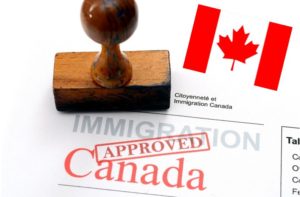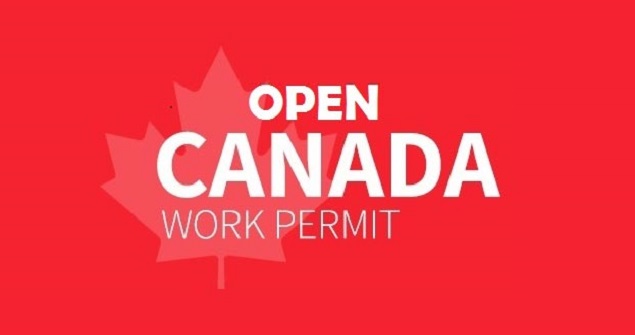Work Visa inside Canada

Work Visa inside Canada: A Comprehensive Guide to Applying from Inside the Country
Introduction
Canada has long been a destination of choice for immigrants and foreign workers seeking better economic opportunities, safety, and quality of life. With its strong economy, multicultural society, and progressive immigration policies, the country attracts thousands of individuals annually to fill labor market gaps across industries. Among these individuals are many who are already inside Canada—either as students, visitors, or temporary residents—seeking to transition to a legal work status.
Applying for a work visa from within Canada offers several advantages, including reduced processing times and easier access to Canadian employers. However, the process can be complex, governed by evolving immigration laws, and varies depending on one's current status and long-term goals.
This essay aims to provide a detailed overview of how to obtain a work permit (commonly referred to as a "work visa") from inside Canada, the categories available, eligibility criteria, application procedures, and the challenges applicants may face.
Understanding the Canadian Work Permit
In Canada, the legal authorization for foreign nationals to work is known as a work permit, not a "work visa" per se. The term "visa" is typically used for travel authorization, while the work permit is the document that grants legal working rights in Canada. It is issued by Immigration, Refugees and Citizenship Canada (IRCC).
There are two main types of work permits:
-
Employer-Specific Work Permits (Closed Work Permits)
-
Open Work Permits
Each type has different requirements, restrictions, and pathways, and the route to getting one from inside Canada depends on your current status.
Who Can Apply for a Work Permit from Inside Canada?
While many work permits are issued outside the country, certain individuals inside Canada can apply for one without leaving. According to IRCC, the following categories are eligible to apply for a work permit from within Canada:
-
International students who have graduated from a designated learning institution and are eligible for a Post-Graduation Work Permit (PGWP)
-
Spouses/common-law partners of skilled workers or international students
-
Refugee claimants or persons under an unenforceable removal order
-
Holders of temporary resident permits
-
In-land sponsorship applicants (spouses/common-law partners of Canadian citizens/permanent residents)
-
Visitors who receive a job offer and meet public policy conditions (under temporary policies)
-
Bridging Open Work Permit (BOWP) holders, for those transitioning to permanent residence
Let’s explore these pathways in greater detail.
1. Post-Graduation Work Permit (PGWP): Work Visa inside Canada
One of the most common routes for applying for a work permit from inside Canada is through the Post-Graduation Work Permit Program (PGWPP). This allows international graduates to work for any employer in Canada, gaining valuable work experience.
Eligibility:
-
Completed a full-time program of at least 8 months from a Designated Learning Institution (DLI)
-
The program must lead to a degree, diploma, or certificate
-
Applied within 180 days of receiving final marks
-
Maintained full-time student status (with some exceptions)
Validity: Work Visa inside Canada
-
Based on the length of your program, up to a maximum of 3 years
The PGWP is an open work permit, which means it is not tied to a specific employer or job.

2. Spousal Open Work Permit (SOWP): Work Visa inside Canada
Spouses or common-law partners of certain temporary residents can apply for an open work permit while inside Canada.
Eligible groups include:
-
Spouses of international students enrolled in full-time post-secondary programs
-
Spouses of skilled foreign workers employed in jobs classified as TEER 0, 1, 2, or 3 under the National Occupation Classification (NOC)
-
Spouses being sponsored in Canada through inland sponsorship
This permit is typically issued for the same duration as the principal applicant's study or work permit.
3. Visitor to Work Permit Pathway: Work Visa inside Canada
Traditionally, visitors in Canada were not permitted to apply for work permits from inside the country. However, due to labor shortages and the COVID-19 pandemic, temporary public policies have allowed visitors to apply for employer-specific work permits without leaving Canada.
Key conditions:
-
Must have valid visitor status
-
Must have a valid job offer supported by a Labour Market Impact Assessment (LMIA) or be LMIA-exempt
-
Must apply under the policy’s active window (check IRCC updates)
This policy, extended several times, is expected to remain in place to address ongoing labor needs. It offers a unique opportunity for visitors already inside Canada to secure employment legally.
4. Employer-Specific Work Permit (Closed Work Permit)
This permit is tied to a single employer, position, and location. It is commonly used by temporary foreign workers hired under the Temporary Foreign Worker Program (TFWP) or International Mobility Program (IMP).
Requirements: Work Visa inside Canada
-
A valid job offer
-
LMIA approval (unless exempt)
-
A contract of employment
-
Compliance with the conditions of the permit (you can’t work for another employer without a new permit)
While traditionally applied for outside of Canada, eligible in-country applicants (such as those who are already on a visitor visa with a valid job offer) can apply from within under certain policies.
5. Bridging Open Work Permit (BOWP): Work Visa inside Canada
The BOWP allows individuals who have applied for permanent residence to continue working while their application is being processed.
Eligibility: Work Visa inside Canada
-
Must have applied under one of the following streams:
-
Federal Skilled Worker Program
-
Canadian Experience Class
-
Provincial Nominee Program
-
Agri-Food Pilot
-
-
Must have a valid work permit or be eligible to restore status
This permit is open, so holders can change jobs or employers freely.

6. Refugee Claimants and Humanitarian Applicants
Refugee claimants, individuals with unenforceable removal orders, or those under humanitarian and compassionate grounds can also apply for a work permit while their case is being reviewed. These permits are essential for financial independence during the wait for a decision.
Application Process: Inside Canada
The application for a work permit from within Canada is typically done online through the IRCC portal.
General Steps: Work Visa inside Canada
-
Determine eligibility based on your current status
-
Gather required documents, which may include:
-
Passport
-
Immigration documents (study/visitor permit)
-
Job offer and LMIA (if applicable)
-
Marriage certificate (for spouses)
-
Proof of graduation (for PGWP)
-
Digital photo, biometrics
-
-
Complete the application forms (e.g., IMM5710 for work permit extensions)
-
Pay the fees: Work Visa inside Canada
-
$155 for a work permit
-
$100 for an open work permit holder fee (if applicable)
-
-
Submit biometrics, if not already done
-
Wait for a decision, which can take anywhere from a few weeks to several months depending on the category
Processing Times and Validity: Work Visa inside Canada
Processing times vary by program type and IRCC capacity. For example:
-
PGWP: ~2 to 3 months
-
Spousal open work permit: ~2 to 5 months
-
LMIA-based closed permits: up to 6 months
Validity of the work permit depends on the specific program and applicant's documents. It's important to not let your current status expire before applying, or you’ll need to apply for restoration of status, which can complicate the process.
Common Challenges and Pitfalls: Work Visa inside Canada
1. Ineligibility Due to Status Expiry
Applicants who overstay a visitor or study permit may lose the right to apply from inside Canada unless they restore status within 90 days.
2. LMIA Complexity: Work Visa inside Canada
Securing an LMIA is challenging. Employers must demonstrate that no Canadian citizen or permanent resident can fill the position, making the process expensive and time-consuming.
3. Misunderstanding Open vs Closed Permits
Some applicants assume all work permits allow job mobility. Employer-specific permits restrict you to one employer, and changing jobs requires applying for a new permit.
4. Delays in Processing: Work Visa inside Canada
IRCC backlogs can result in long wait times. It's important to apply well in advance of your status expiry.
5. Not Meeting Language or Educational Standards
Certain programs, like PGWP or BOWP, require proof of education or English/French proficiency, which can hinder eligibility.
Benefits of Applying from Inside Canada
-
Continuity: You can remain in Canada legally while your application is being processed.
-
Speed: In-country processing can be faster than applying from abroad.
-
Opportunity: You may gain Canadian work experience, which is highly valued in permanent residency applications.
-
Family Reunification: Spouses and children often have better chances of staying together under in-country applications.
Pathways to Permanent Residency: Work Visa inside Canada
Work permits often serve as stepping stones to permanent residency (PR). After gaining Canadian work experience, applicants may qualify for:
-
Canadian Experience Class (under Express Entry)
-
Provincial Nominee Programs (PNPs)
-
Quebec Skilled Worker Program
-
Agri-Food and Caregiver Pilots
Applicants working legally in Canada often have a significant advantage in PR selection, especially those who meet the Comprehensive Ranking System (CRS) requirements in Express Entry.
Conclusion
Obtaining a work permit from inside Canada is not only possible—it is increasingly common, especially in the post-pandemic labor environment. Whether through postgraduate permits, spousal sponsorship, LMIA-backed employment, or public policy measures, there are multiple pathways for individuals already in Canada to legally enter the workforce.
However, the process demands careful planning, a clear understanding of eligibility, and strict adherence to immigration rules. Missteps can lead to status loss or refusal. Therefore, consulting official IRCC sources or seeking guidance from certified immigration consultants is highly recommended.
As Canada continues to rely on skilled and diverse talent to power its economy, in-country work permits remain a vital part of its immigration landscape—offering hope and opportunity to thousands of newcomers each year.
In case, if you need help with Work Visa in Canada or other immigration service, please fill in application below or contact us directly.

